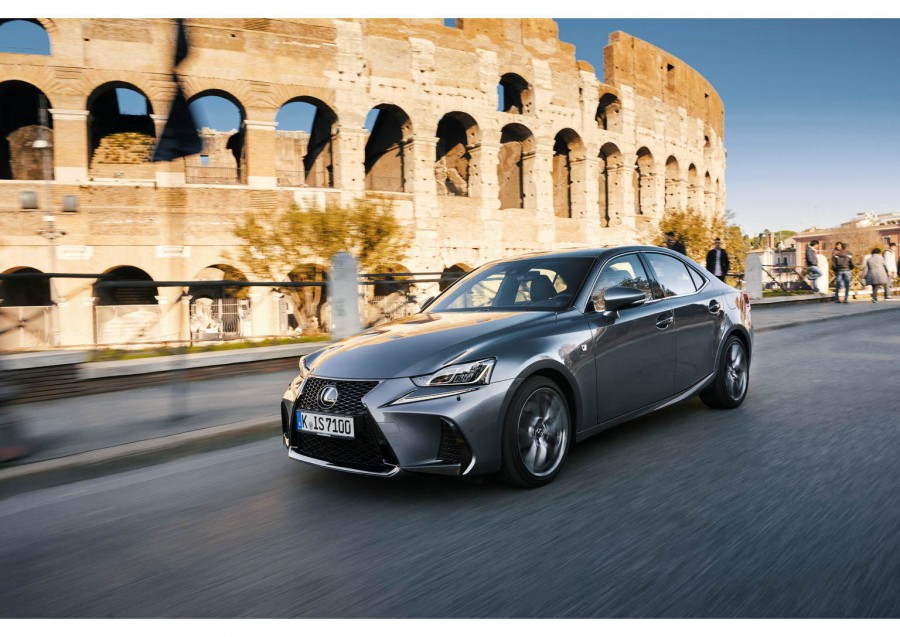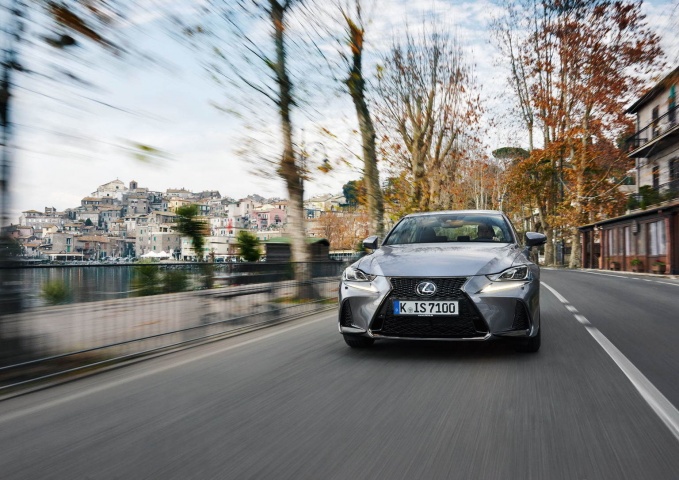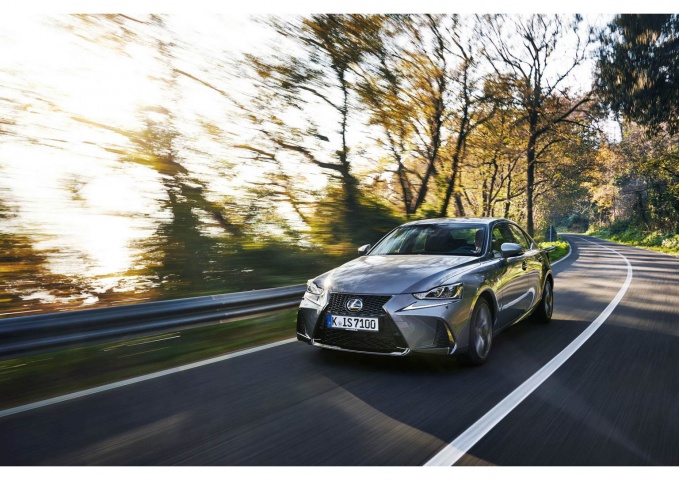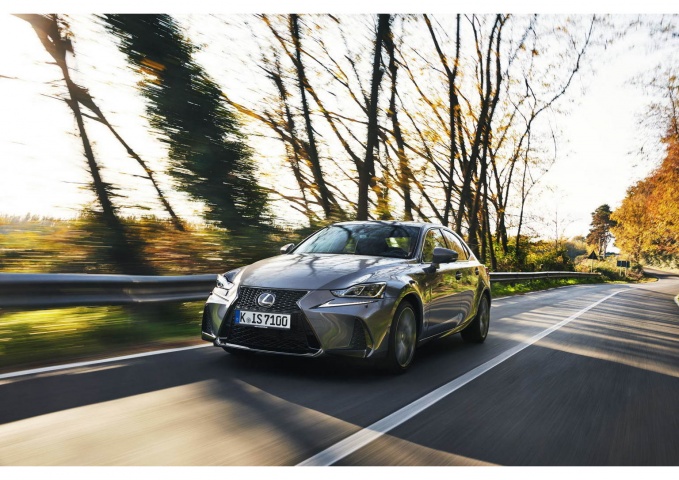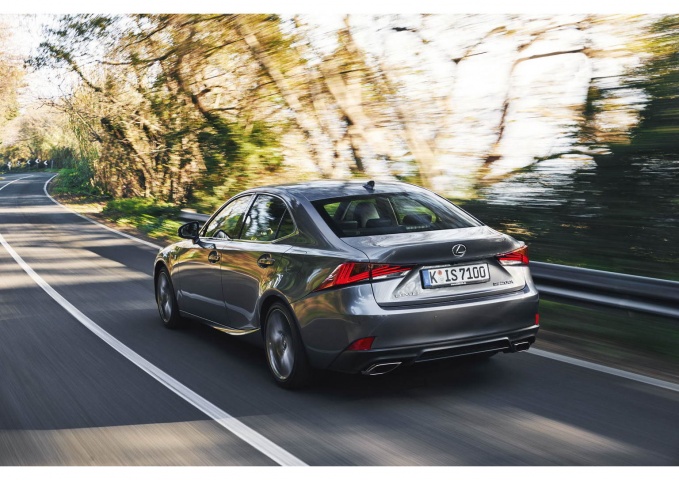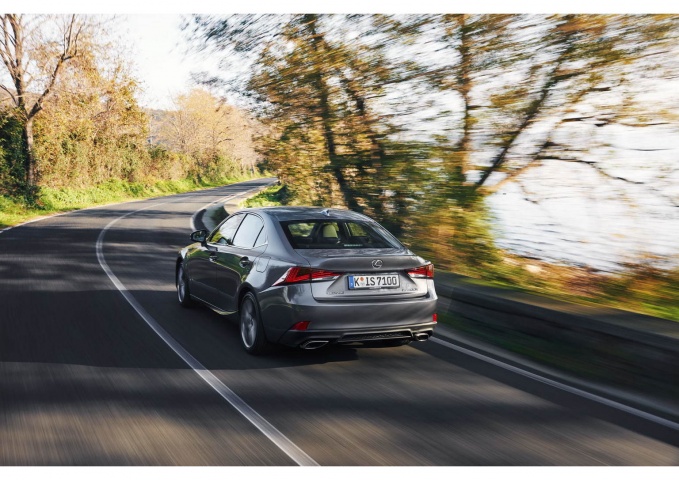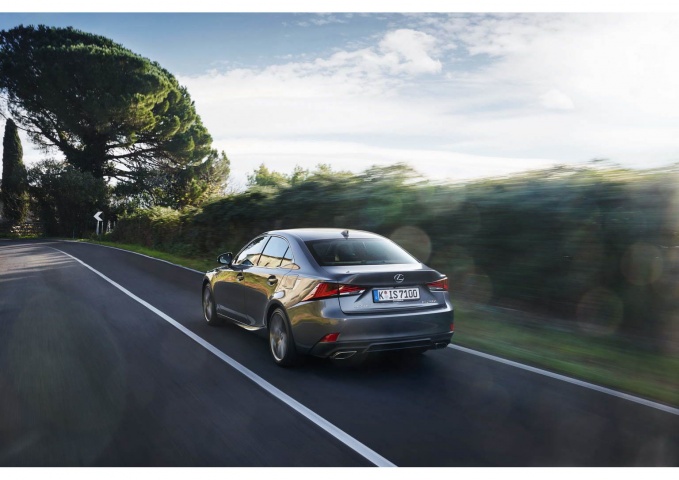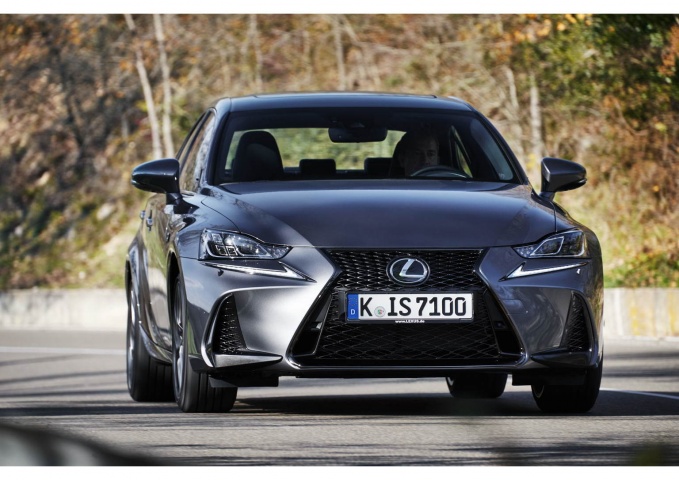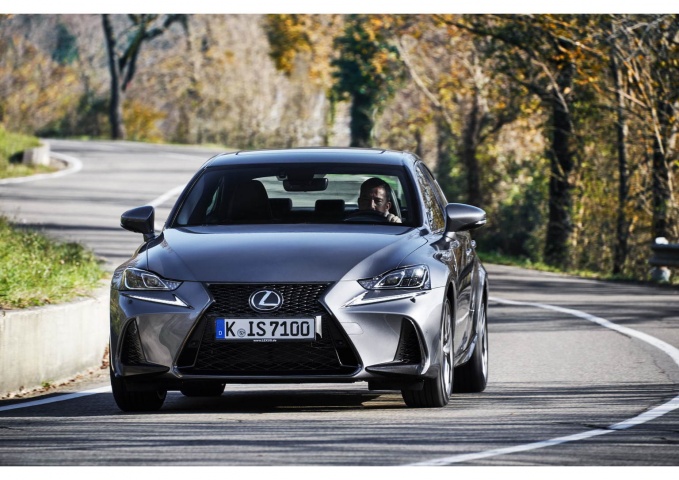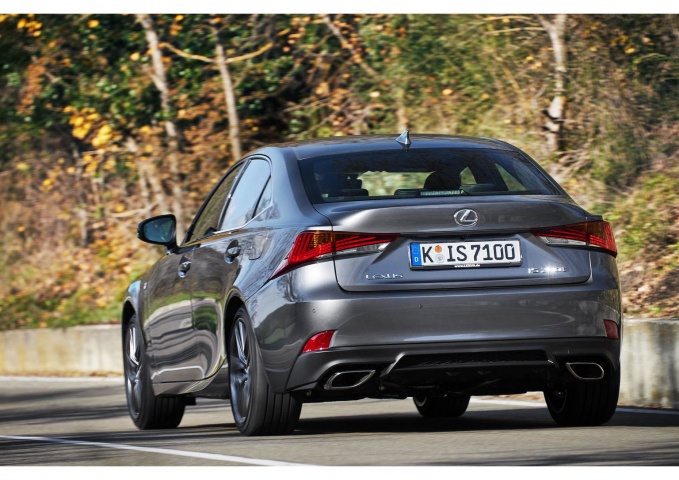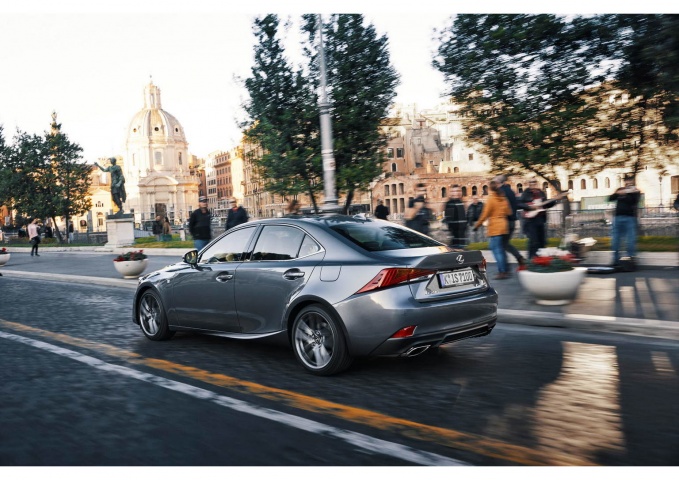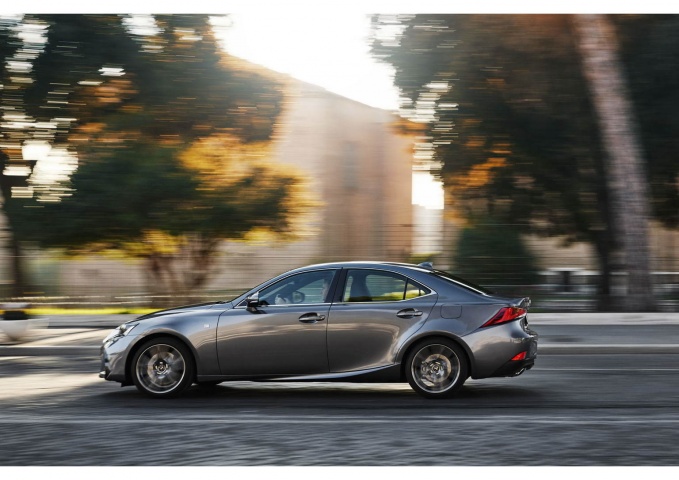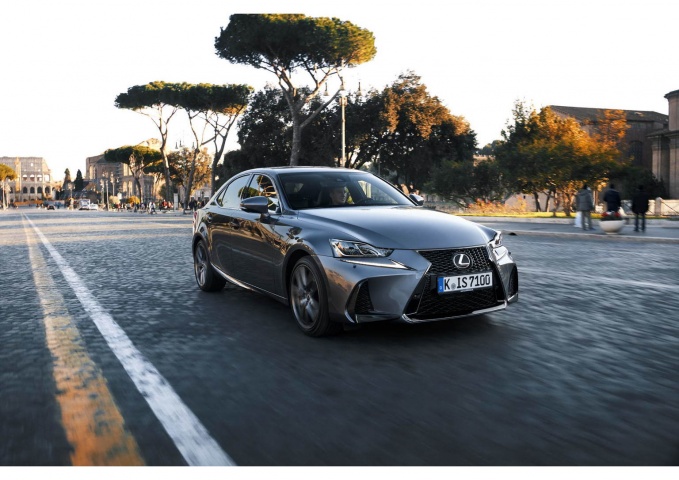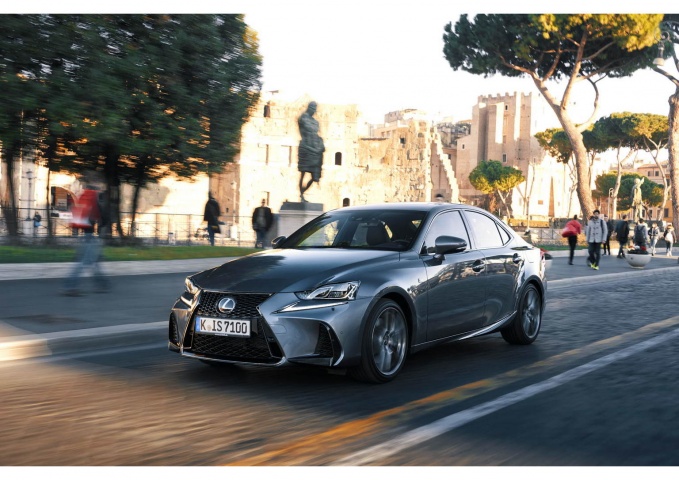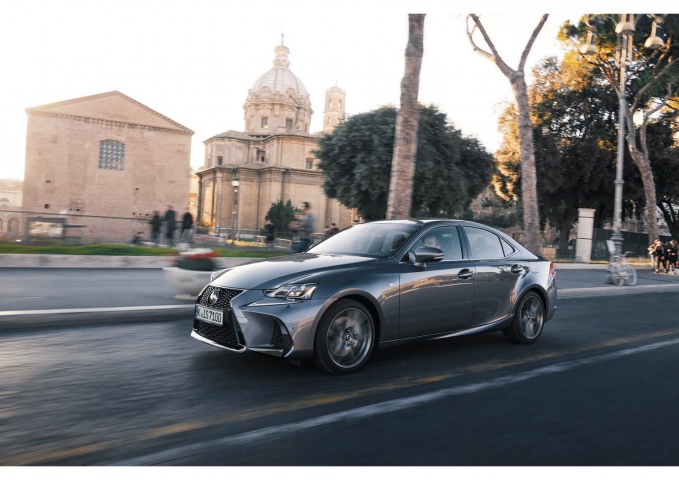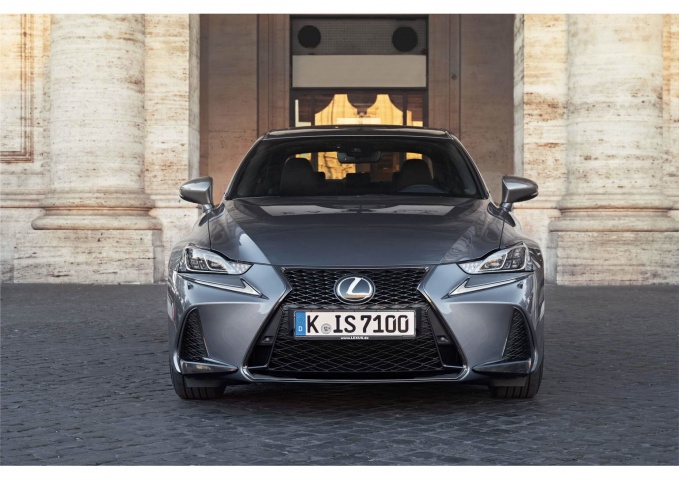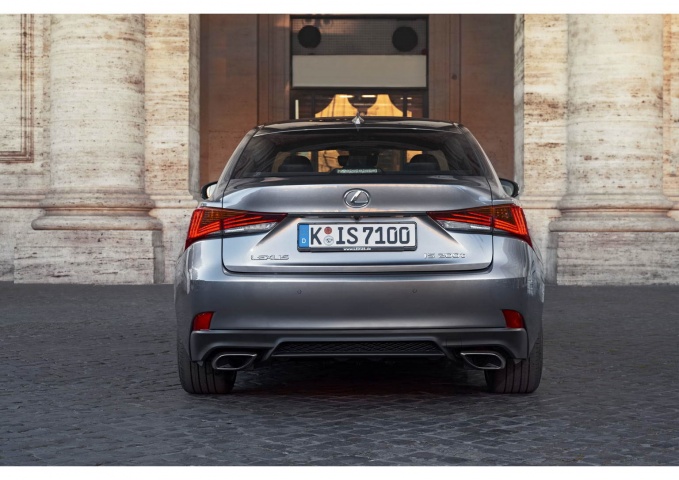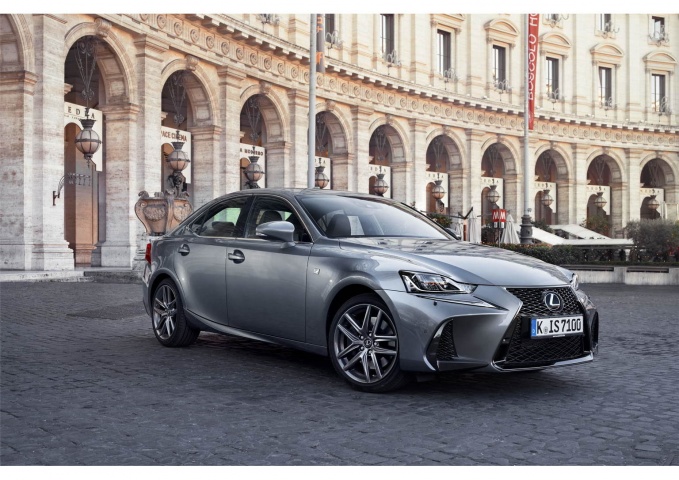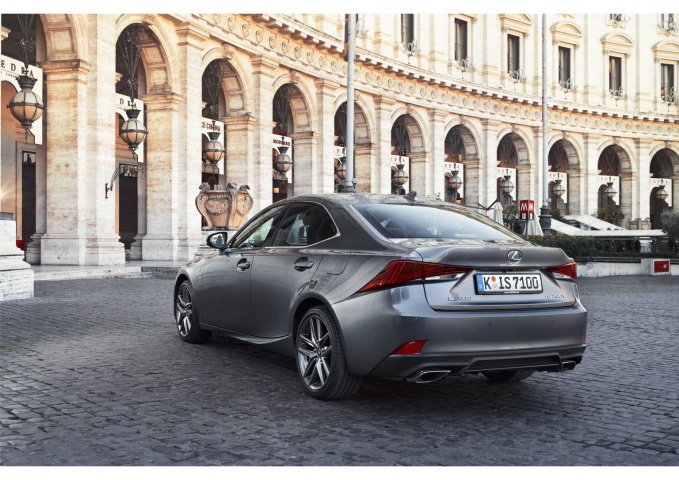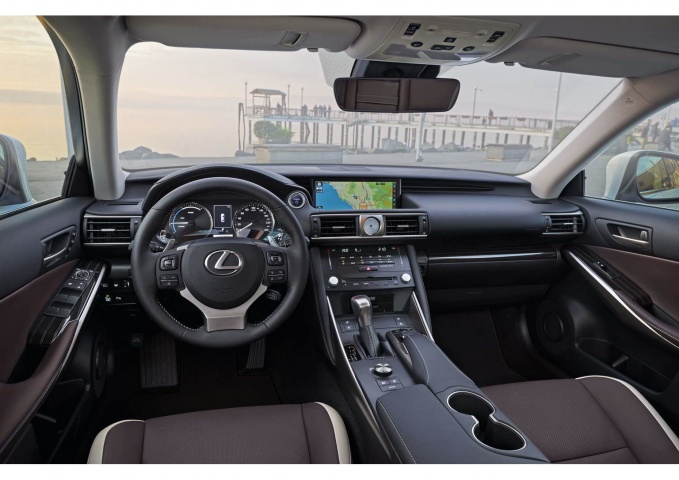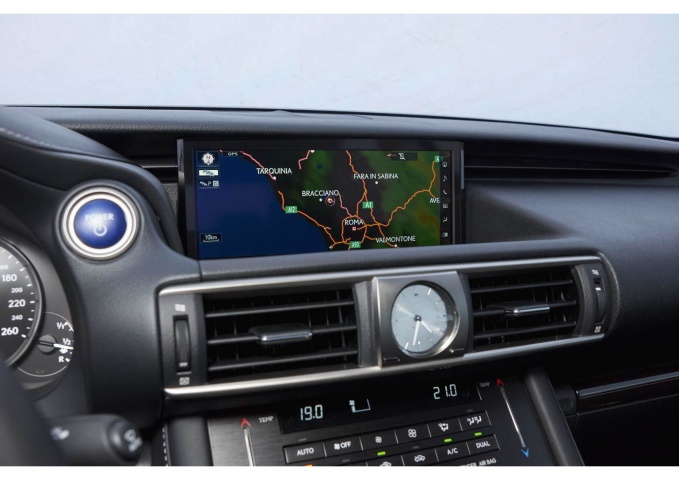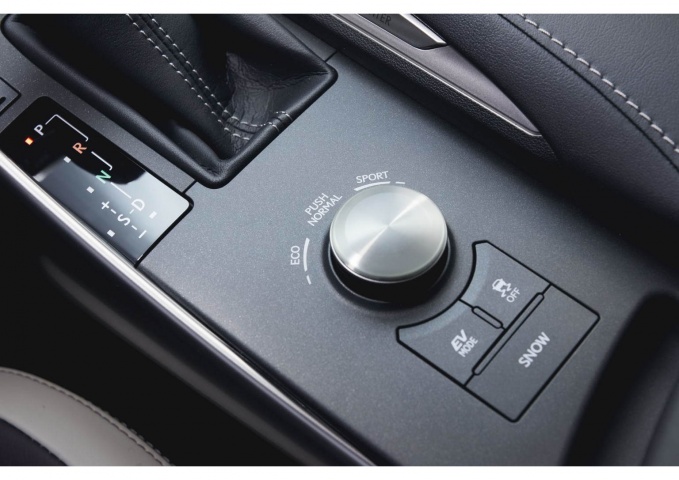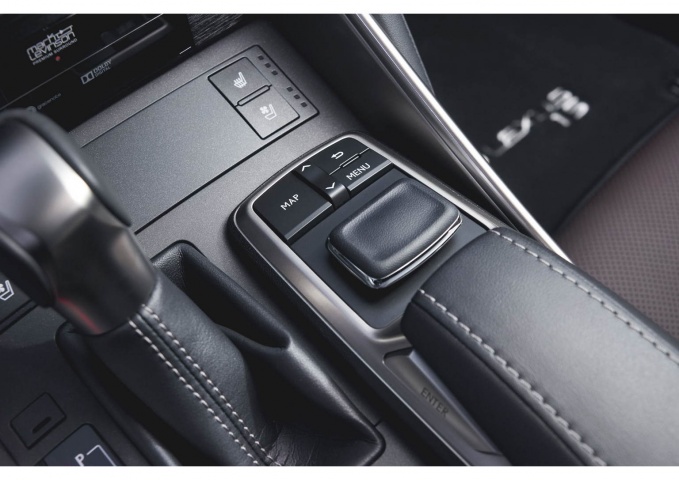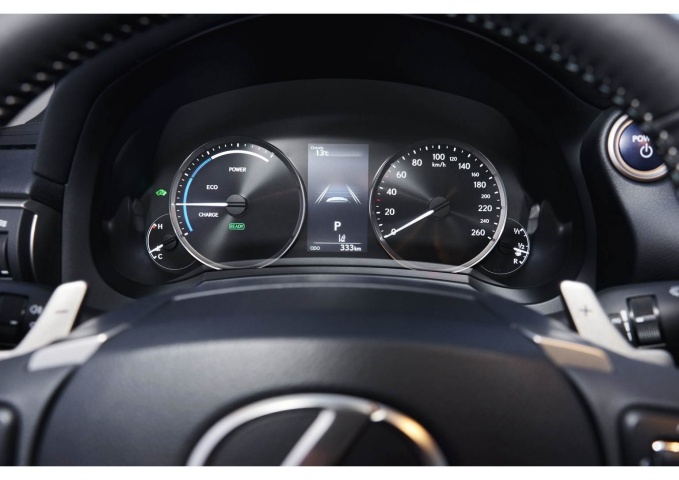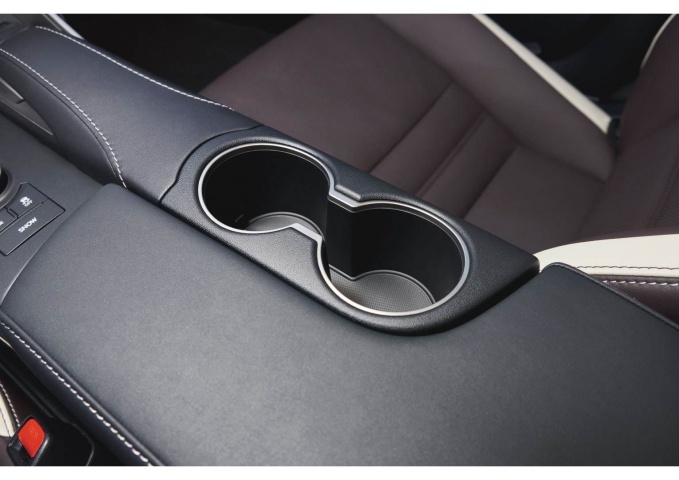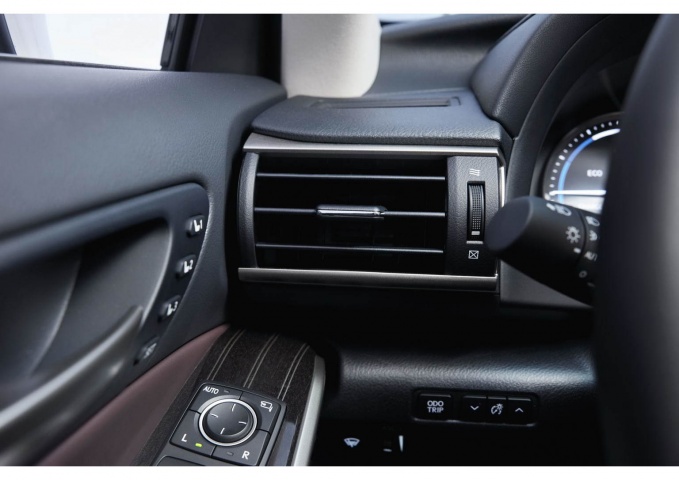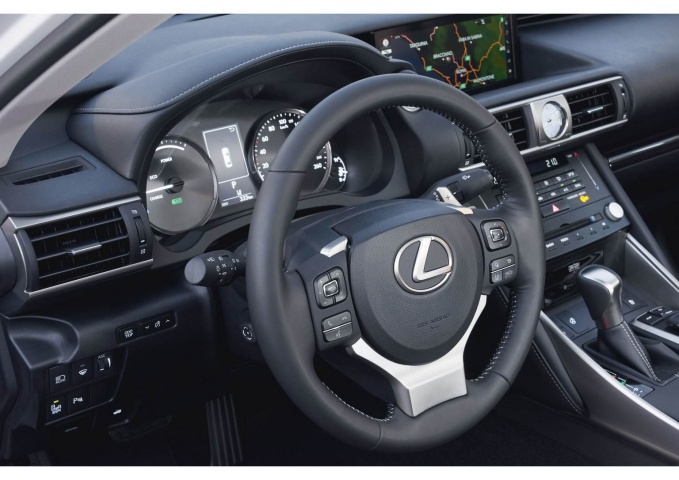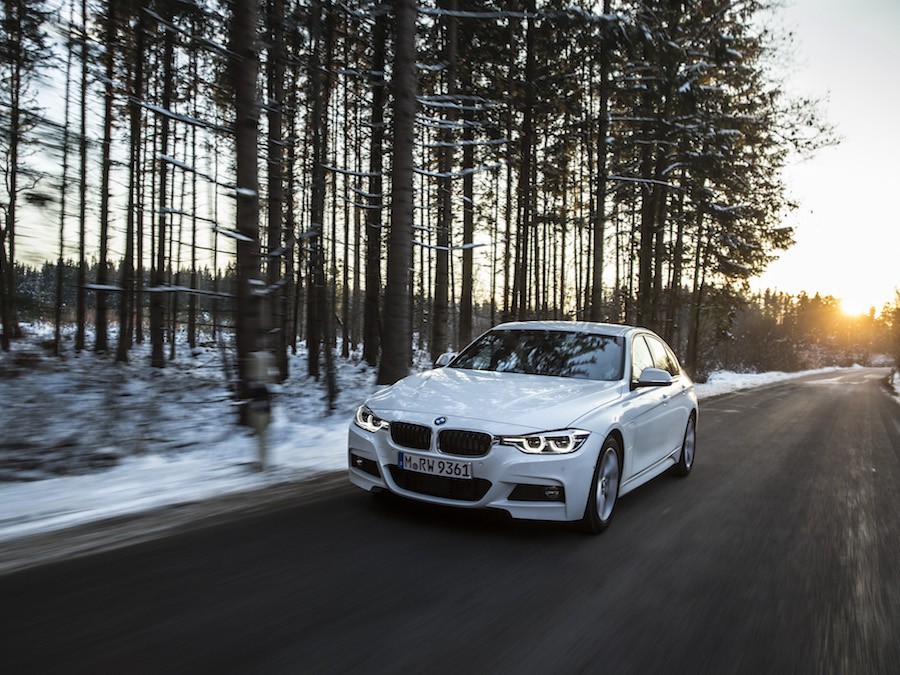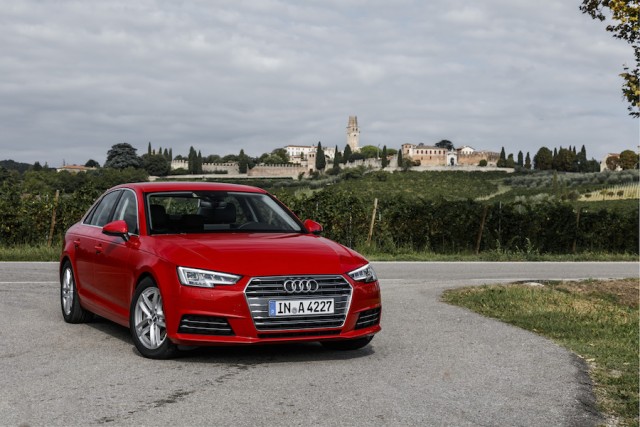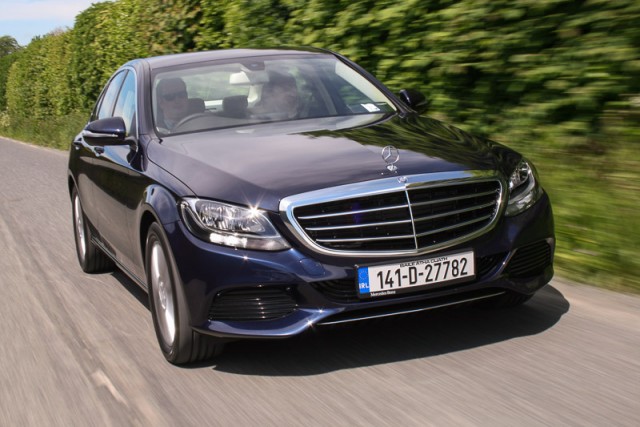Lexus updates its venerable IS 300h hybrid saloon, and while attempts have been made to sharpen up both looks and dynamics, it's still not as exciting to drive as its main rivals. If you're ok with that, then it's undoubtedly a high-quality product.
In the metal
The IS has always been a, how shall we say, 'interesting' car in terms of appearance when compared to its more restrained German classmates. Updates for the 2017 model year are a case of gentle evolution rather than outright revolution and you might be hard-pressed to notice the differences upon first glance. Parking the new version beside the outgoing car, new headlamps and tail lights are evident, along with a larger front grille (with redesigned 'spindle' mesh) and reshaped air intakes. These are even more defined for the F Sport trim level, and along with an overall sharpening of the car's lines in profile, two new colour options are available (Deep Blue Mica and Graphite Black). New alloy wheel designs top it off and Lexus mentions that an overall improvement in the car's aerodynamics has been achieved, without actually telling us what that improvement might be...
Inside, more subtle touches abound. The steering wheel is a replica of that fitted to the Lexus RC coupe, the central infotainment screen gains size (it's now at 10.3 inches) and ergonomics have been improved for the switchgear. A good example is the Remote Touch Interface controller (a sort of mouse-like pointer), with its extended palm rest and extra buttons, although it's still a little awkward in its operation. New trim and colour options can be specified and overall it's still a lovely place to be. The LFA-style dial movements are a neat little touch too.
Driving it
According to Naoki Kobayashi, chief engineer for the Lexus IS, much time was spent surveying customers around the globe for this mid-life revision. Feedback centred on the provision of a more involving driving experience and to that end Kobayashi-san and his team set about revising the suspension and steering. No updates to the powertrain were deemed necessary, so effort was expended on retuning the springs and shock absorbers, introducing a new rear anti-roll bar and beefing up bushings and the front lower suspension arms. The result? A very slight improvement over the outgoing model. The strange power delivery brought about by the CVT transmission is teamed with heavier (but feedback-free) steering, an inherent propensity to roll when cornering at speed and a slightly choppy ride over rougher surfaces, especially with the adaptive dampers set to Sport mode. Our test car came with the optional 18-inch wheels, so perhaps a suppler ride could be achieved by specifying the smaller-diameter items. The engine sounds strained when given its head and flicking the paddle shift levers precludes the strange event of seeing the gear display on the dash change, without any discernible physical effect. It's far from being a bad car, but rivals have it roundly licked in terms of enjoyment and driver involvement. The solution? Stick the transmission back in D, relax and enjoy the IS's ability to cruise along with zero fuss.
What you get for your money
This is where the Lexus IS starts to make more sense. The base-level Eco model starts at €40,950, although Lexus expects very few of these to sell. The S-Design, Luxury and F Sport trims come in at €42,950, €44,950 and €46,950 respectively, while the range-topping Premium is €50,950. Working in the IS 300h's favour is its low CO2 emissions and corresponding taxation rates, though the quoted fuel economy figures proved to be rather challenging to achieve on our test route. Pricing is broadly comparable to that of its main competitors' and the amount of standard equipment included at each trim level is a plus. Lexus has also improved the standard safety features on every model bar the SE, and these now include a sway warning function that can aid in detecting sleepiness or concentration loss behind the wheel.
Summary
After parent company Toyota spearheaded the hybrid revolution nearly two decades ago, it's somewhat surprising to witness the IS being overtaken by its class rivals in offering a plug-in hybrid solution. This update is no more than a mild refresh of an already competent car, but the promised improvement in driving dynamics has failed to materialise. The Lexus IS is quite good-looking, well kitted out and still represents good value, but those looking for a truly enjoyable drive will still lean towards the Teutonic brigade.

